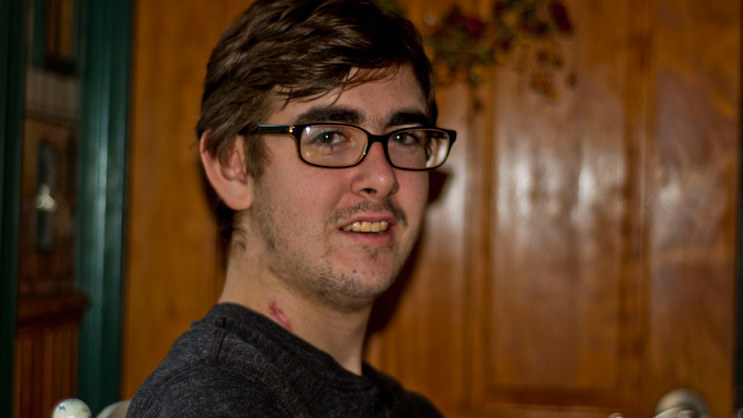
On August 5, 2011, 19-year-old Robert Loftus tripped while catching the game-winning touchdown pass in a football game with friends. He broke his leg — both his tibia and fibula — and was rushed to the ER at Hudson Valley Hospital Center. On the morning of the 6th, he was visited by his orthopedist, Dr. Steven Small, and surgery to place a rod in his broken leg was scheduled for 3 pm that day. Just as the operation was beginning, however, the anesthesiologist was alarmed to find that Robert’s lungs were dangerously filling with fluid. The surgery was called off, and while still in the OR, Robert was put on a mechanical ventilator.
Robert had developed a severe case of ARDS, or acute respiratory distress syndrome; his lungs were failing. After four days on the ventilator, Robert’s breathing was not improving; on the contrary, it was rapidly getting worse. Recognizing the severity of his patient’s condition, Dr. Alex Fijman, pulmonologist at Hudson Valley, called the Medical ICU team at NewYork-Presbyterian Hospital/Columbia University Medical Center, to see if Robert could be transferred. Discussing the case, they soon realized that Robert was too sick even to be transferred; he needed ECMO, right away. Daniel Brodie, MD, Director of the Medical ECMO Program, was contacted immediately.
ECMO stands for extracorporeal membrane oxygenation; it is a machine that takes over the function of the lungs. A patient’s blood is run out of his or her body, through the ECMO machine, which provides oxygen to the blood and removes carbon dioxide, and is then sent back into the body. The machine serves essentially as a set of mechanical lungs, allowing the patient to rest his or her biological lungs. It is far less damaging than using just the mechanical ventilator Robert had been relying on. The team was hoping that ECMO would help provide Robert’s lungs with the reprieve they desperately needed.
Dr. Matthew Bacchetta, MD, MBA, MA, Director of the Adult ECMO program, and his Mobile ECMO Transport team rushed to Hudson Valley Hospital Center and put Robert on ECMO in swift, organized fashion. They warned Robert’s parents that because his condition was so critical, he might not survive. To his family’s relief, he recovered much more quickly than expected; about a week later, his condition had already improved dramatically, and Robert was taken off ECMO August 15. Robert stayed in the hospital for another week as his broken leg was X-rayed and recast; then, on August 24, he went home.
Dr. Brodie says that Robert is lucky. “If Dr. Fijman hadn’t taken such good care of Robert early on and hadn’t had the presence of mind to call Columbia so quickly, Robert may not have survived at all,” he says. Dr. Brodie, Dr. Bacchetta, and the rest of the ECMO team are working to spread the awareness to hospitals that if a patient develops severe ARDS, ECMO is an important option to consider. In patients like Robert, ECMO can save lives.
Related Link: NewYork-Presbyterian Hospital campuses collaborate to use ECMO, saving patient’s life
